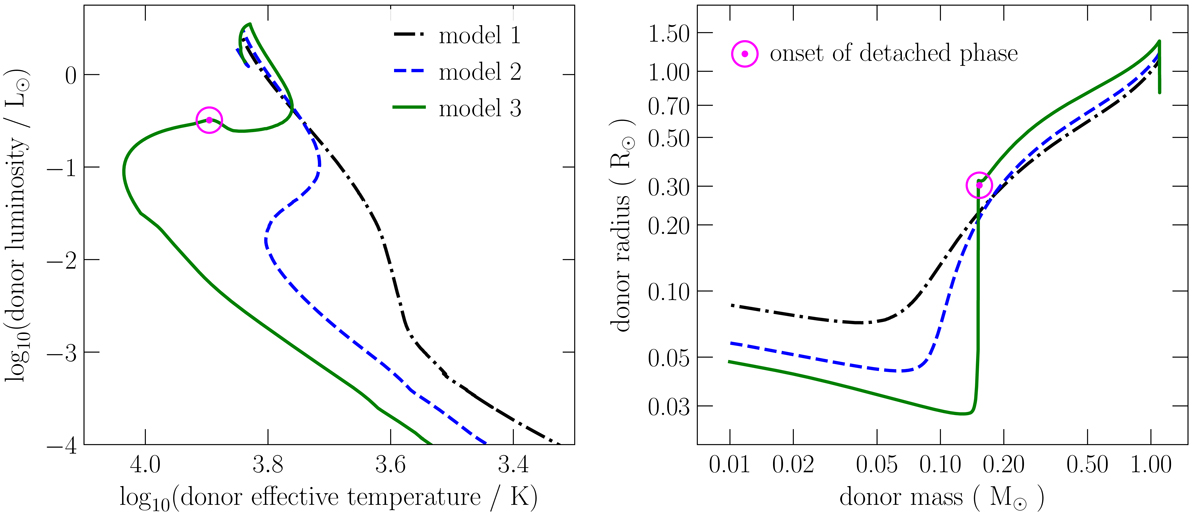Fig. 2.

Download original image
Hertzsprung-Russell diagram (left panel) and mass–radius evolution (right panel) of the donors of the three models shown in Fig. 1, namely model 1 (dot-dashed black lines), model 2 (short-dashed blue lines) and model 3 (solid green lines). Following the onset of mass transfer, the donor luminosity, effective temperature and radius decrease. The radius of donors with relatively massive helium cores (≳0.05 M⊙) at the onset of mass transfer eventually starts to decrease faster during the evolution. In case the effective temperature reaches sufficiently high values, the convective envelope vanishes which causes magnetic braking to become inefficient and the donor to detach from its Roche-lobe (illustrated by the magenta circles for model 3). The more evolved the donor at the onset of mass transfer, the higher the donor mass at the moment the radius starts to decrease faster and the higher the maximum effective temperature reached during the evolution.
Current usage metrics show cumulative count of Article Views (full-text article views including HTML views, PDF and ePub downloads, according to the available data) and Abstracts Views on Vision4Press platform.
Data correspond to usage on the plateform after 2015. The current usage metrics is available 48-96 hours after online publication and is updated daily on week days.
Initial download of the metrics may take a while.


